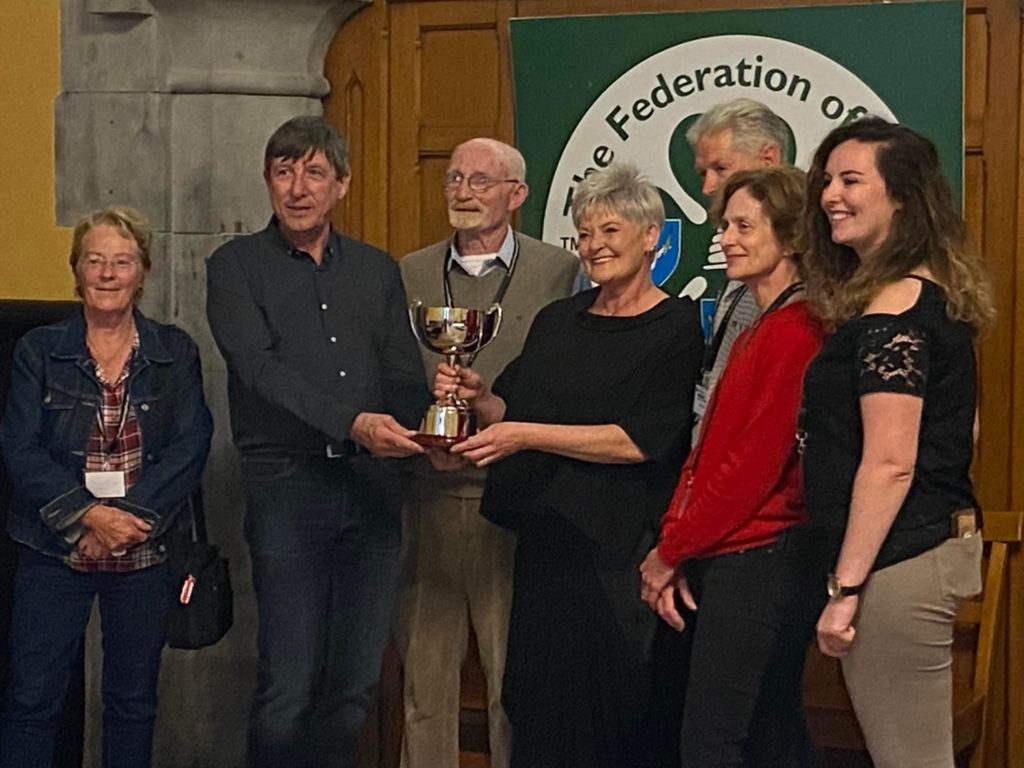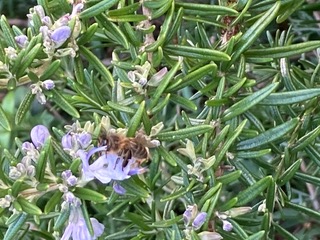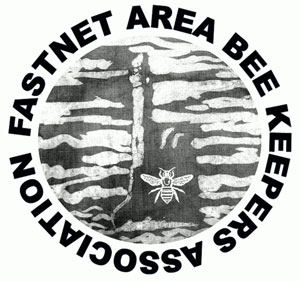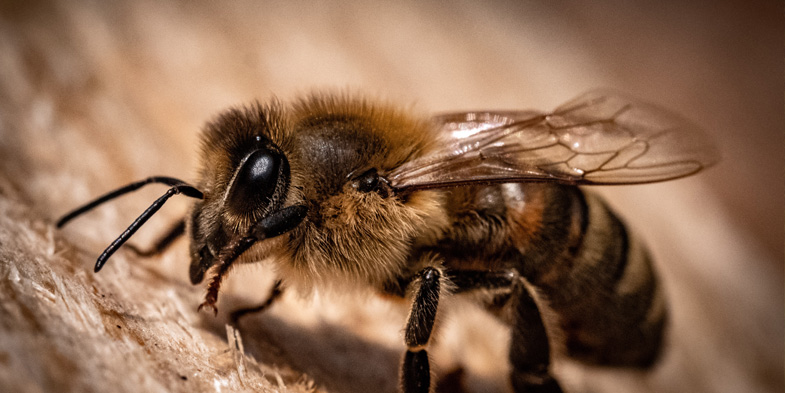Hello Beekepers!
Hello all Our 2022 season is almost complete and preparations for the next season are upon us!
All the FABKA team have done fantastic work since our inauguration on that cold winter’s night in February 2020 at the Teagasc office in Skibbereen. Our gradual increase in repeat membership renewals have impressed ourselves and others over the past three years. This in itself is a great accolade, because it reinforces our belief that if we treat people right then it reaps benefits for all. So, well done to all our members!
2022 has been a very good year because we were able to have some in-person meetings again and actually meet the faces we see online. We know in-person meetings are not convenient for everybody, so Zoom has helped us keep our membership informed.
2022 saw the introduction of the new education pathway, starting with stage 2. This is ongoing and will come into its own through 2023 when members get their first step on the education ladder and become qualified in enough basics to ‘buddy up’ with beginners and bring them along their first steps to independent beekeeping.
Another big plus was the return of the FIBKA Summer School and Honey Show. This was well represented by FABKA Members.
Best of all was our big win of the Federation of Irish Beekeepers ‘Association of the Year’ cup. Give yourself a big pat on the back for all your efforts in our collective achievement!
Scroll to the bottom of the newsletter for details about our next in-person meeting (on Wednesday 16th November in Ballydehob), our upcoming mini-honey show and a raffle with a VERY special prize!

Guest Article: Getting the Best From Your Bees
by Jim Ryan
It was great to see so many of you at our last Wednesday evening zoom meeting! Jim Ryan kindly sent us a very informative article entitled ‘Getting the Best from your Bees’ and I hope you will find it a helpful reference – Mairead.
_
We were all told early in our beekeeping careers to change 2 or 3 frames in the brood chamber each year.
So how best to do that change? Use fresh foundation or drawn comb?
If you give the bees fresh foundation bees can leave it there for weeks. The result is the queen cannot use it and the bees cannot put stores in it. One useful tip is to give them drawn comb, which means it is available to the bees immediately to clean the cells for the queen to start laying plus build up their stores.
Undrawn foundation can act as a barrier just as effectively as frames of granulated honey.
So where do you get drawn comb?
You plan for it. There are a couple of sources. If you have managed your bees effictively and they did not swarm you have a great opportunity after taking off the honey around August. As you remove the supers for harvesting you can place a brood box full of frames of new foundation on top of the queen excluder as you are putting on the clearing board on top of the brood box you just placed over the queen excluder you replace all the supers you are going to harvest.
The second brood box will now allow the bees room to move down. You cannot expect a hive full of bees with 5 or 6 supers to fit in a single broodchamber.
Remove the supers and the clearing board the following day. Place a feeder on the hive and feed. The first lot of feed may well go into the top brood chamber but if fed again they will begin to draw out the foundation. Do not let them start to store in it, because you only want drawn foundation for next season. (A little stores is no harm).
Remove frames when drawn or nearly so. You will get the best drawn comb possible as it will be worker brood from top to bottom and side to side with every cell available to the bees. It is easy to make out how much drawn comb you need – Say 3 times the number of colonies you have plus 5 or 6 for each nuc you intend to make. You can also use a brood chamber with new foundation as your first super. That means that you have lighter weights to lift when removing them to extract. I prefer the this first method.
However if you remove an old brood frame from the brood chamber, don’t be tempted to reuse same. If you have a solar extractor put it into that otherwise, remove the old wax and thoroughly clean the frame for reuse and discard the old comb. The main problem in storing old combs is that you are rearing wax moths and they will destroy any supers they can get access to.
Use a dummy board in every brood chamber. Bees do not build combs straight and frequently have bulges on frames. These will rub against the adjoining frame rolling and killing bees as you withdraw the frame. If you are unlucky you may even kill the queen. A dummy of say 6/8 mm thick will give enough room to pull the frame back slightly and withdraw it without mishap. Squashing bees can contribute to disease in the hive.
First inspection tells you how well your bees have survived the winter. If you live in an area where there is alot of ivy you can find the cluster of say 4/5 frames is followed by solid frames of ivy honey. What to do? Remove 2 or 3 and replace with drawn comb. If I have no drawn comb how do I manage? Remove a few frames and bring them in. Carefully uncap them and place in a container of cold water. An old sink is ideal as the complete frame can be submerged.. In 24 hours the honey will be gone. Remove and give a good shake to dislodge the water and return to the hives. In 2-3 weeks or so these frames will contain brood, honey and pollen.
All queens to be marked and clipped. That puts you in control.
At every inspection we want information from the bees. Write it down – develop your own shorthand and write dowm immediately after putting the roof back on. The information you want –
1 Is the queen present and laying? Brood in all stages will confirm.
2 Is the colony building up well? Compare with other colonies or your records will confirm.
3 Have the bees enough room? If they are covering 7/8 frames – put on a super. Early supering will delay swarming.
4 Have the bees enough stores until next inspection?
5 Anything unusual? If you see something you do not understand, ask someone. Don’t leave it.
6 Queen cells?
Try to work with another beekeeper. You have 2 opinions and the lifting is shared. Have the smoker lighting but use sparingly or not at all. Best not to use it if you are looking for the queen. Be slow and gentle in your movements and avoid crushing bees when replacing supers or the crownboard. Use the smoker to clear away the bees. Never leave frames of honey or brace comb lying about. Record every inspection. You don’t need a long essay – just a few ticks in a sheet can record all you need.
Plan for when you find queen cells not if you find them. Decide your swarm control in advance and have everything ready. If you have to make up a nuc don’t use old frames.
When you find queen cells do not panic. Find out what the bees are doing before you remove any of them. If you find a swarm out in your apiary knock them into a box immediately as they may fly away when you’re inspecting the hives. Once in the box place them out of the sun and find out where they came from. The best thing to do is to hive the swarm on the parent stand and move the swarmed colony to a new stand. The flying bees from the old hive will join the swarm as they will fly out from the new location and return to the old one where you placed the swarm. The old hive will be further weakened and may give up thoughts of swarming. Best go through them and remove all sealed queen cells and leave one charged one. Don’t be tempted to leave two as that gives the bees an option.
Go through the swarming colony and establish what the bees are doing. The swarm may already be gone. If the queen is still there, remove her on a good frame of emerging brood. Place her in a nuc box with 1 good frame of stores and a frame of drawn comb. I generally make them up weak and if necessary, give frames of emerging brood later to strengthen them over winter.
Try to keep queens in each hive until June 15 ( not always possible). By then the bees that are going to bring in the crop are in the hive. At that stage you should have very strong colonies and if the weather is favourable, you should get a crop.
At every visit to the apiary bring a bucket with a lid and collect all the wax you can. The lid is to keep the bees out of the bucket as there will be some honey in it. Every beekeeper should have a solar wax extractor – a box with a glass lid. When we get a few sunny hours, the wax will melt. Bring in the blocks and store in a clean safe place. Later you can melt it down and get it ready for use. You do not have to strain wax to clean it to exchange for foundation. Melt it in a bain-marie (water-jacketed pot). Melt and when almost melted boil a kettle of soft water. I get mine from the dehumidifier. When the wax is fully melted pour about 25mm of boiling water into your mould and immediately pour in the wax. Cover with newspapers – 2 or 3 full papers over the mould and leave until the wax is cold. Drain off the water and knock the wax out of the mould. You will find the bulk of the dirt on the bottom. Scrape into the compost heap. Repeat to get the wax cleaner. If you want to make candles etc. you will need to strain. The best filter is white lint which you can get in a chemist. It can be expensive so shop around. Do not try to short-circuit wax melting by starting with the filter. There are so many impurities in wax (propolis added by the bees) and this ‘dirt’ is so heavy that it will block the strainer almost immediately and the bulk of the wax will fail to go through the cloth.
Plants for Hungry Honey Bees
Rosemary

There is nothing fancy about Rosemary but for beekeepers its benefits are 3-fold. (1) In a sheltered spot it will bloom right through winter giving your bees a lovely bit of nectar even in January when this photo was taken. (2) You have a ready source of chopped herb which when drizzled over cubed potatoes with a little olive oil & salt, then roasted, is the Perfect, Quick (!) and Easy accompaniment to a winter roast. (3) Finally, Rosemary is robust, pretty and easily propagated. Different varieties exist including prostrate and pink such as Marjoica Pink or Miss Jessop’s Upright which is growing happily here nestled safely under a Bay tree.
There is nothing so uplifting than to see your girls out and about on a fine winter’s morning working the Rosemary!
Recipe: Coconut Pumpkin Soup
Recipe kindly provided by Elizabeth Savage.
- 1 Tbl vegetable oil
- 3 dried red chiles, broken
- 2 Tbl fennel seeds (heaping)
- 1 Star anise
- 2 Tbl chopped white onion
- 4 cm fresh ginger
- 6 large cloves garlic, crushed
- 750 gm pumpkin
- 1 tsp salt
- Scant 1 cup (200 ml) coconut milk (tinned)
- Honey (to taste)
- Coconut cream or sour cream to garnish
In a large frying pan with a cover, melt the butter. Add the carrots, sprinkle with the salt and cover liHeat oil over medium-high heat. In quick succession add the broken dried chilies, fennel seeds and star anise, followed by the onion, ginger and garlic, then cook, stirring, for a few minutes. Stir in the pumpkin, and add enough warm water to cover, along with the salt. Bring to a boil, then reduce the heat, cover and simmer for 15-20 minutes until the pumpkin is tender.
Purée for a smooth texture. Place back on heat to warm through. Stir in the coconut milk or sour cream, then taste for seasoning, adding HONEY and more salt to suit your taste.
Serve in bowls, with some coconut cream (or sour cream) swirled on top.
(From Asma Khan, Ammu: Indian Home-cooking to nourish your soul, Interlink books 2022)
Stage 2 Education – Weekly Zoom Lectures
The Tribes Beekeeping Association have kindly offered our members the opportunity to join them each Wednesday evening via Zoom. See your past emails for the Zoom link from Michael! All the presentations to date have been really informative, and for anyone who might want to advance to Stage 2, it’s a must. Speaking of which, all the new members who completed the introductory lectures for beginners have the Stage 2 book purchased already and we’ll give you those at our next meeting on the 16th Nov. For all other members who are interested in completing this stage, please let us know and we can order your book from FIBKA for you.
Next Meeting, Honey Show & Raffle: November 16th, Ballydehob
We will be having an in-person meeting in the Ballydehob Community Hall on Wednesday November 16th commencing at 7:30pm.
We will be having our AGM and look forward to hearing any suggestions, proposals, constructive criticism, etc. We’ll certainly continue working together, mimicking the behaviour of our bees.
We are also holding our first very small honey show! I encourage all members to bring an unlabelled jar of honey. Any size, any lid – just a jar of your own prepared honey. We even have a trophy! After the judging, we can look at areas which can be improved and explain mistakes that might have been made. Look at it as being a learning exercise. Your honey is a premium product and should be presented at its very best. Depending on your input we might even add a few more classes for next year. Again, you know, from humble beginnings!
We will also be holding a raffle and because our table quiz was so successful the first prize will be a nuc of our native Irish honeybees.
Some of our more experienced beekeepers will be there to offer advice and share their knowledge. As always, we always appreciate everyone’s input. Gardening, plants, articles or books you’ve read, recipes, anything at all that might help us and our bees.
Looking forward to meeting you all next month!
Beir bua agus beannacht (kind regards),
Mairead Love & the team at FABKA

